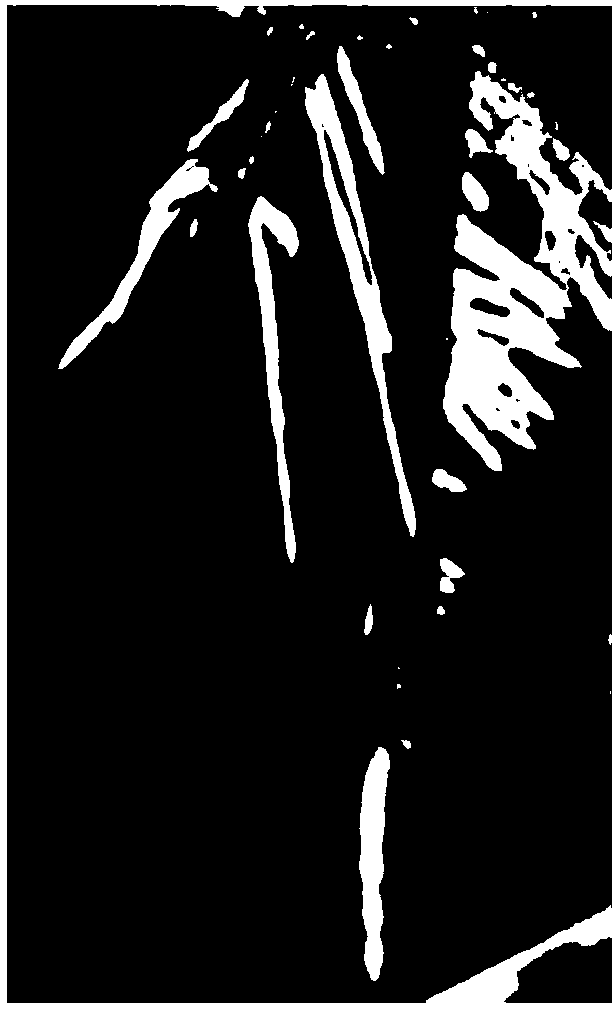Treating fluid and method for water cutting propagation of rosa chinensis by using same
A technology for treating liquid and Chinese rose, which is applied in the field of water plug propagation and treatment liquid of Chinese rose, can solve the problems of large space occupation, labor-intensive and time-consuming, etc., and achieves the effects of low cost, increasing photosynthetic products, and inhibiting activity.
- Summary
- Abstract
- Description
- Claims
- Application Information
AI Technical Summary
Problems solved by technology
Method used
Image
Examples
Embodiment 1
[0024] The influence of embodiment 1 different treatment liquid immersion treatment on rooting effect
[0025] In order to promote rooting of water-cut cuttings as soon as possible, the cuttings need to be soaked in different concentrations of treatment solution before cutting. In order to reduce the pollution rate of the root system and improve the freshness of the original leaves, aspirin of different concentrations is added to the medicament. Three factor L9(3 4 ) Orthogonal experimental design: the experimental factors are IBA, NAA, aspirin. Three levels were selected for each factor, 0, 100, and 300 mg / L for IBA and NAA, and 0, 500 mg / L, and 1000 mg / L for aspirin. Equal volume was added, and the experiment was repeated 3 times.
[0026] The test results showed that the adventitious root germination of cuttings treated with different treatment solutions was different in the morning and evening, and roots began to germinate at the earliest 7 days, while a small amount of ...
Embodiment 2
[0041] The influence of embodiment 2 different water inserting time on rooting effect
[0042] The water insertion test was carried out on the lignified branches at different times, and April and November were respectively selected for comparative experiments. The liquid treatment used was: IBA100mg / L+NAA300mg / L+Aspirin 1000mg / L, soak the branches for 2 hours before water insertion , the results are shown in Table 4.
[0043] The influence of table 4 different water inserting time on rooting effect
[0044]
[0045] It can be seen from Table 4 that the above-mentioned test results are significantly different by variance analysis, mainly due to differences in temperature conditions and branch physiological states. Although the test was carried out in a greenhouse, the temperature in November was only maintained at about 18°C; The temperature in the shed was maintained at around 25°C. High temperature can significantly accelerate the growth of callus and root germination. ...
Embodiment 3
[0046] The influence of embodiment 3 different branch states on rooting
[0047] The physiological state of branches in different parts is different, and the rooting conditions of cuttings are also different, as shown in Table 5.
[0048] The influence of table 5 different branch states on rooting
[0049]
[0050] According to the comparison test in Table 5, it was found that there were significant differences in the rooting rate and root development index of branches in three different states, and the effect of semi-lignified twigs was the best. The effect of young shoots without lignification is the worst. The main reason for analysis is that young shoots without lignification are very young, the base of the branches is easy to rot, the leaves are easy to wilt, and eventually lead to death; The function of the dredging tissue is weakened, the differentiation of callus is difficult, and adventitious roots are not easy to produce; the tissue of semi-lignified branches is ...
PUM
 Login to View More
Login to View More Abstract
Description
Claims
Application Information
 Login to View More
Login to View More - R&D
- Intellectual Property
- Life Sciences
- Materials
- Tech Scout
- Unparalleled Data Quality
- Higher Quality Content
- 60% Fewer Hallucinations
Browse by: Latest US Patents, China's latest patents, Technical Efficacy Thesaurus, Application Domain, Technology Topic, Popular Technical Reports.
© 2025 PatSnap. All rights reserved.Legal|Privacy policy|Modern Slavery Act Transparency Statement|Sitemap|About US| Contact US: help@patsnap.com



